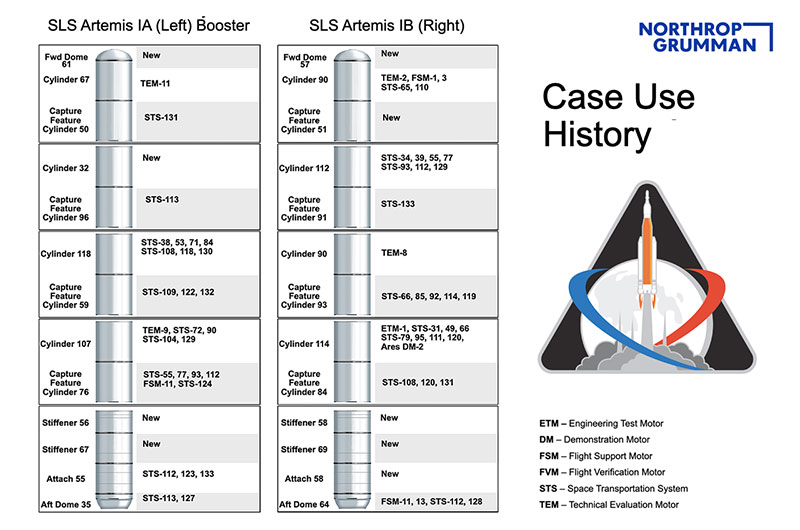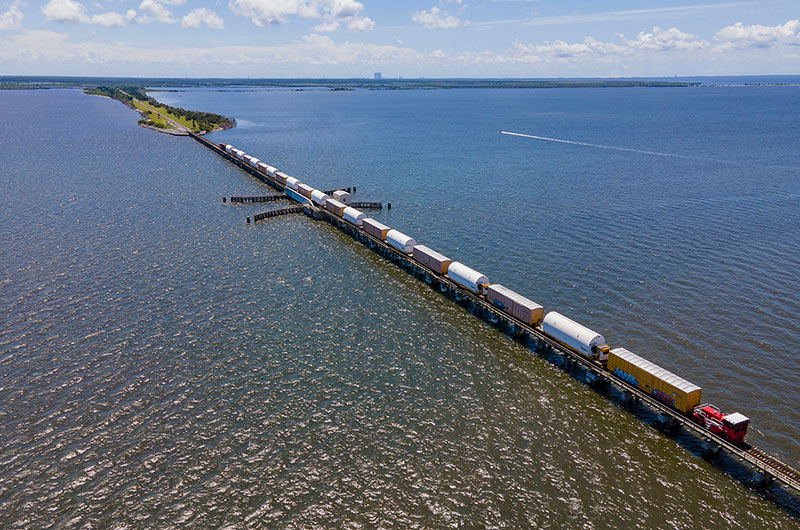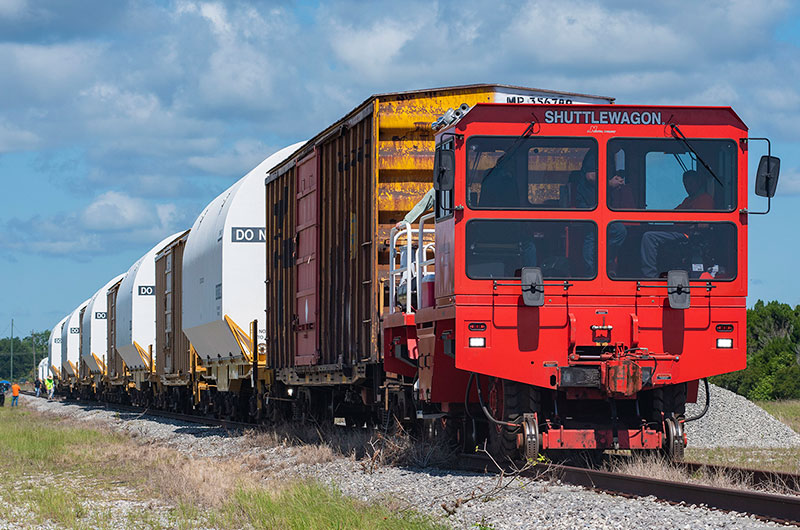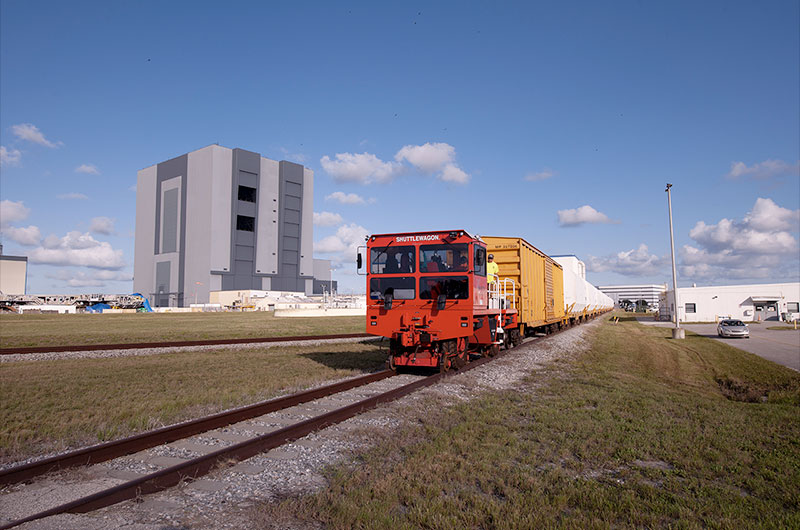20.05.2020
NASA will likely add a rendezvous test to the first piloted Orion space mission

Astronauts will likely perform a previously-unplanned demonstration of the Orion spacecraft’s deep space rendezvous capabilities in a high-altitude orbit around Earth on the crew capsule’s first piloted test flight, now scheduled for 2023.
The new objective on the first piloted Orion test flight would allow astronauts and engineers to evaluate the capsule’s ability to approach another spacecraft, demonstrating the rendezvous system before it’s needed on future missions to dock with a lunar lander and the planned Gateway mini-space station in orbit around the moon.
The astronauts on the first crewed Orion flight, named Artemis 2, will oversee the ship’s ability to operate in close proximity to another object in space, likely either the upper stage of the Orion’s rocket or a satellite carried as a piggyback payload, NASA officials said last week.
“In order to go ahead and buy down risks for future dockings of Orion, on the Artemis 2 mission, we are planning to do a rendezvous and proximity operations demonstration,” said Doug Loverro, head of NASA’s human spaceflight directorate, in a May 13 meeting of the NASA Advisory Council’s Human Exploration and Operations Committee.
Adding the new test to the Artemis 2 mission will help engineers “understand the handling characteristics of Orion, (and) make sure that we have the simulators correct on Earth so we can get that actual real-time feedback in orbit,” Loverro said.
The rendezvous maneuvers will also verify the performance of the Orion spacecraft’s laser and imaging sensors used to navigate around other objects in space, Loverro said.
Under the scenario being studied by NASA, the Orion spacecraft would not actually perform a docking on the Artemis 2 mission. That would wait until the following flight, named Artemis 3, when NASA hopes to send astronauts to the moon for the first time since the end of the Apollo program in 1972.
Adding the rendezvous demonstration to the Artemis 2 mission would be a “benefit to us in understanding how the Orion system moves and operates in space,” said Marshall Smith, director of NASA’s human lunar exploration programs.
Smith said modifying hardware and developing a target for the Orion spacecraft to perform an actual docking demonstration on Artemis 2 would be too costly. He said such a change would not offer a significant benefit to NASA because a similar docking system to Orion’s will be tested at the International Space Station.
While Loverro said NASA is planning a rendezvous test on Artemis 2, Smith said details have not been finalized.
“The bottom line is we will probably will go and do a rendezvous and prox ops (proximity operations) activity on Artemis 2,” Smith said. “We haven’t finalized that yet, but we’ve now narrowed it down to a couple of options we think are doable.”

The Orion spacecraft — built by Lockheed Martin — will launch on top of NASA’s Space Launch System, a heavy-lift rocket comprised of core stage with four leftover engines from the space shuttle program, and two side-mounted solid-fueled boosters. On the first version of the SLS, named Block 1, a modified upper stage originally designed for United Launch Alliance’s Delta 4-Heavy rocket will send the Orion capsule into orbit.
The Artemis 2 flight plan has been in the works for several years. The SLS upper stage — known as the Interim Cryogenic Propulsion Stage, or ICPS — will place the Orion spacecraft into an elliptical, or egg-shaped, orbit stretching more than 21,000 miles (35,000 kilometers) from Earth.
The high-altitude orbit will allow the Orion astronauts to test the craft’s life support systems for a couple of days before heading on a trip around the moon and back to Earth. The Orion spacecraft could perform the rendezvous demonstration in that phase of the mission, when the capsule is thousands of miles from Earth but not yet on the way to the moon.
“One of the things that I think we all learned from Apollo, and that I think we need to make sure we learn here, is that missions build upon one another,” Loverro said. “We don’t need to take the giant leap all at one time.”
Smith said NASA is evaluating whether to use the SLS upper stage or a satellite carried on the same rocket with with the Orion spacecraft. He added that there are “schedule reasons” why NASA may not want to modify the SLS upper stage to fill the role of the docking target, but the agency has made no final decisions on the matter.
Adding the rendezvous demonstration is “one change that we’re probably going to make,” Smith said. “At least I’m going to recommend.”
The Artemis 2 mission will follow the Artemis 1 test flight, in which an unpiloted Orion spacecraft will lift off from the Kennedy Space Center on the inaugural SLS launch. The mission will last 26 to 42 days, depending on when the launch occurs, and the Orion spacecraft will enter a distant orbit around the moon for a series of checkouts before coming back to Earth for re-entry and splashdown in the Pacific Ocean.
The Artemis 1 launch is now scheduled for November 2021, around four years later than NASA envisioned when the SLS program was conceived in 2011. And that schedule does not account for schedule slips stemming from the coronavirus pandemic, which has forced NASA to pause preparations for a test-firing of the first SLS core stage at the Stennis Space Center in Mississippi.
The Artemis 2 mission — the first SLS/Orion flight with astronauts — is scheduled for launch from the Kennedy Space Center in 2023, according to Kathryn Hambleton, a NASA spokesperson.
The White House directed NASA last year to land astronauts on the moon’s south pole before the end of 2024. NASA renamed its moon program Artemis, the twin sister of Apollo in Greek mythology, and laid out an accelerated timeline to bring the next crewed lunar landing mission from 2028 to 2024.
Under NASA’s current plan, the moon landing could occur on the Artemis 3 mission in 2024, but the schedule is aggressive. The development of a human-rated lunar lander is in the critical path for a 2024 moon landing.
NASA selected industry teams led by Blue Origin, Dynetics and SpaceX last month to mature their concepts for a crewed lunar lander. The space agency and contractor teams will refine requirements and mission architecture choices over the next 10 months, then NASA is likely to select two landers to proceed into full-scale development.
Loverro, who joined NASA as the agency’s top human spaceflight manager late last year, spent the first several months of his tenure overseeing a review of the Artemis program’s schedule. The reviewers concluded NASA should reorganize parts of the agency’s Human Exploration and Operations Mission Directorate, and establish a systems engineering and integration authority responsible for orchestrating end-to-end mission analysis for the Artemis program.
NASA should also identify programs managers for all phases of the Artemis program, which both aims to get astronauts to the moon in 2024 and develop a “sustainable” human presence around the moon by 2028, Loverro said.
The Gateway, a mini-space station to be assembled in lunar orbit, is needed to achieve an enduring lunar program, according to NASA officials. Agency managers say the Gateway will eventually be used as a staging point for astronauts on the way to the surface of the moon, accommodating reusable lunar landers and contributions from international partners. The Gateway outpost will also host a range of science experiments.
But NASA has decided not to use the Gateway for Artemis 3, the program’s first human landing attempt, in order to alleviate schedule pressure, Loverro said. Instead, astronauts on the Orion capsule will directly link up with a lunar lander in an elliptical halo orbit around the moon, then proceed to the surface.
According to NASA’s current plan, the landing vehicle will launch on a commercial rocket without anyone on-board, then maneuver into lunar orbit to await the arrival of the Orion crew.

Loverro told Spaceflight Now last month that NASA still wants to use the Gateway for subsequent Artemis landing missions, beginning with Artemis 4. The first elements of the Gateway could still be in position around the moon in time to provide communications relay support for Artemis 3, he said.
Another major change to the Artemis architecture in the last few months involves how NASA plans to launch the first two Gateway modules. The Gateway’s Power and Propulsion Element, or PPE, and the Habitation and Logistics Outpost, or HALO, were originally to launch on separate commercial rockets, then autonomously rendezvous and dock in the vicinity of the moon.
NASA last year announced its selection of Maxar to build the PPE, which provides power generation and solar-electric propulsion for the Gateway. Northrop Grumman will supply the HALO module, which is based on the pressurized section of the company’s Cygnus space station supply ship.
Loverro said launching the two elements on the same rocket would save money and reduce the risks of something going wrong during the docking near the moon.
“What we had was a Power and Propulsion Element that had its own launch on a Falcon Heavy, and we had a HALO with its own launch on a Falcon Heavy, and they were then going to have to have independent propulsion systems, and independent docking systems, and independent power and guidance and control systems,” Loverro said last month. “They were both going to have to independently get their way to the moon and then (autonomously) dock with each other.
“And then the complexity of routing all of the power for the long-term for the Gateway through that docking mechanism, and fluids and other things that we needed to do, all made that system quite complex,” Loverro said. “We realized that if we could put it all together on the ground, we got rid of all that risk and reduced the cost, not just because we saved a launch vehicle but because we got rid of a whole bunch of added complexity in the system.”
The combined launch of the PPE and HALO modules will require a rocket with a longer payload fairing. It turns out the U.S. military needs a rocket with a similar payload envelope, so companies are already working on extended fairings to satisfy national security requirements.
The Space Force plans to select two providers as soon as next month to be eligible to win national security launch contracts in competitions held between 2020 and 2024 for missions launching through 2027.
SpaceX’s Falcon Heavy is the only rocket in the ongoing military launch competition that is currently operational. United Launch Alliance, Blue Origin and Northrop Grumman are also competing in the ongoing launch service procurement, and each has proposed new rockets still in development.
Dan Hartman, NASA’s Gateway program manager, said May 13 that the PPE and HALO elements will be connected together with an adapter on the ground, allowing engineers to route power and data connections before launch.
“That offers some significant advantages,” Hartman said. “We will eliminate one launch vehicle, so we’re effectively eliminating the launch vehicle that we had on contract with Maxar (for the PPE). We’re eliminating the service module that we had as part of HALO.
“And then the docking systems, this inter-element adapter will take care of the structural, mechanical, power and fluids interfaces for us,” Hartman said.

Northrop Grumman will manage work to perform the connections between the PPE and HALO modules at the Kennedy Space Center in 2023, Hartman said. The elements are scheduled for launch in November 2023, according to NASA.
NASA released a draft request for launch services proposals May 6 to lay out the performance requirements for the mission. NASA’s Launch Services Program at Kennedy, which oversees launch procurement for the agency’s robotic science missions, plans to select a rocket for the Gateway launch by “late fall” of this year, Hartman said.
Before deciding to go for the tandem launch, NASA officials said they confirmed at least one company will have the ability to launch the modules together on the same rocket.
“We’ll see what we get,” Hartman said. “There could be options out there when we get the proposals back in, but we did check with one, and we think we’re in good shape there.”
Quelle: SN
----
Update: 27.05.2020
.
Third European Service Module for mission to land astronauts on the Moon

It’s official: when astronauts land on the Moon in 2024 they will get there with help from the European Service Module. The European Space Agency signed a contract with Airbus to build the third European Service Module for NASA’s Orion spacecraft that will ferry the next astronauts to land on the Moon.

NASA’s Artemis programme is returning humans to the Moon with ESA’s European Service Module supplying everything needed to keep the astronauts alive on their trip in the crew module – water, air, propulsion, electricity, a comfortable temperature as well as acting as the chassis of the spacecraft.
The third Artemis mission will fly astronauts to Earth’s natural satellite in 2024 – the first to land on the Moon since Apollo 17 following a hiatus of more than 50 years.
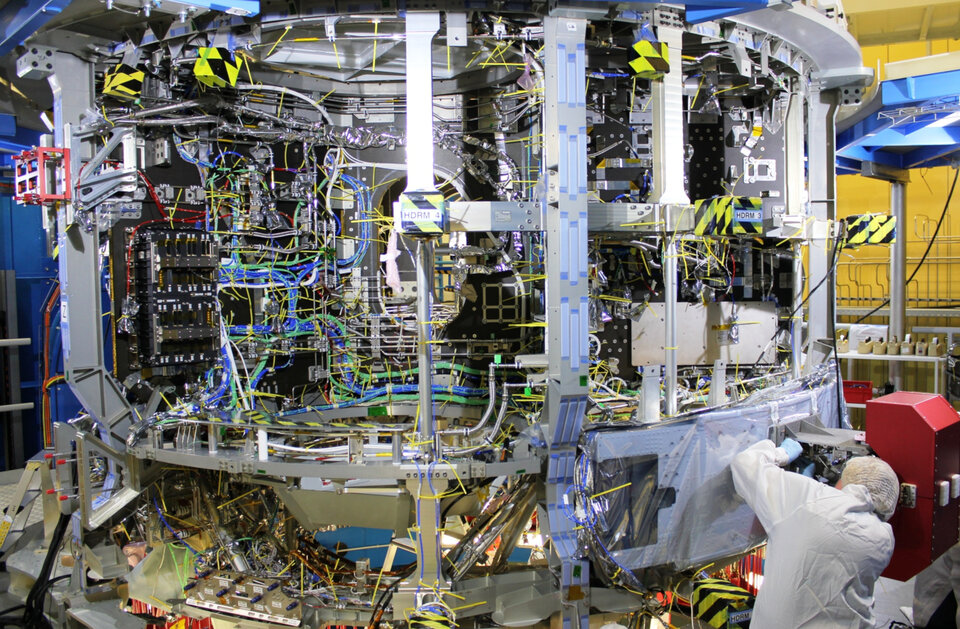
ESA’s director of Human and Robotic Exploration David Parker said: “By entering into this agreement, we are again demonstrating that Europe is a strong and reliable partner in Artemis. The European Service Module represents a crucial contribution to this, allowing scientific research, development of key technologies and international cooperation – inspiring missions that expand humankind’s presence beyond Low Earth Orbit.”
Over 20 000 parts and components are used in each European Service Module, from electrical equipment to engines, solar panels, fuel tanks and life-support elements for the astronauts, as well as approximately 12 kilometres of cables.
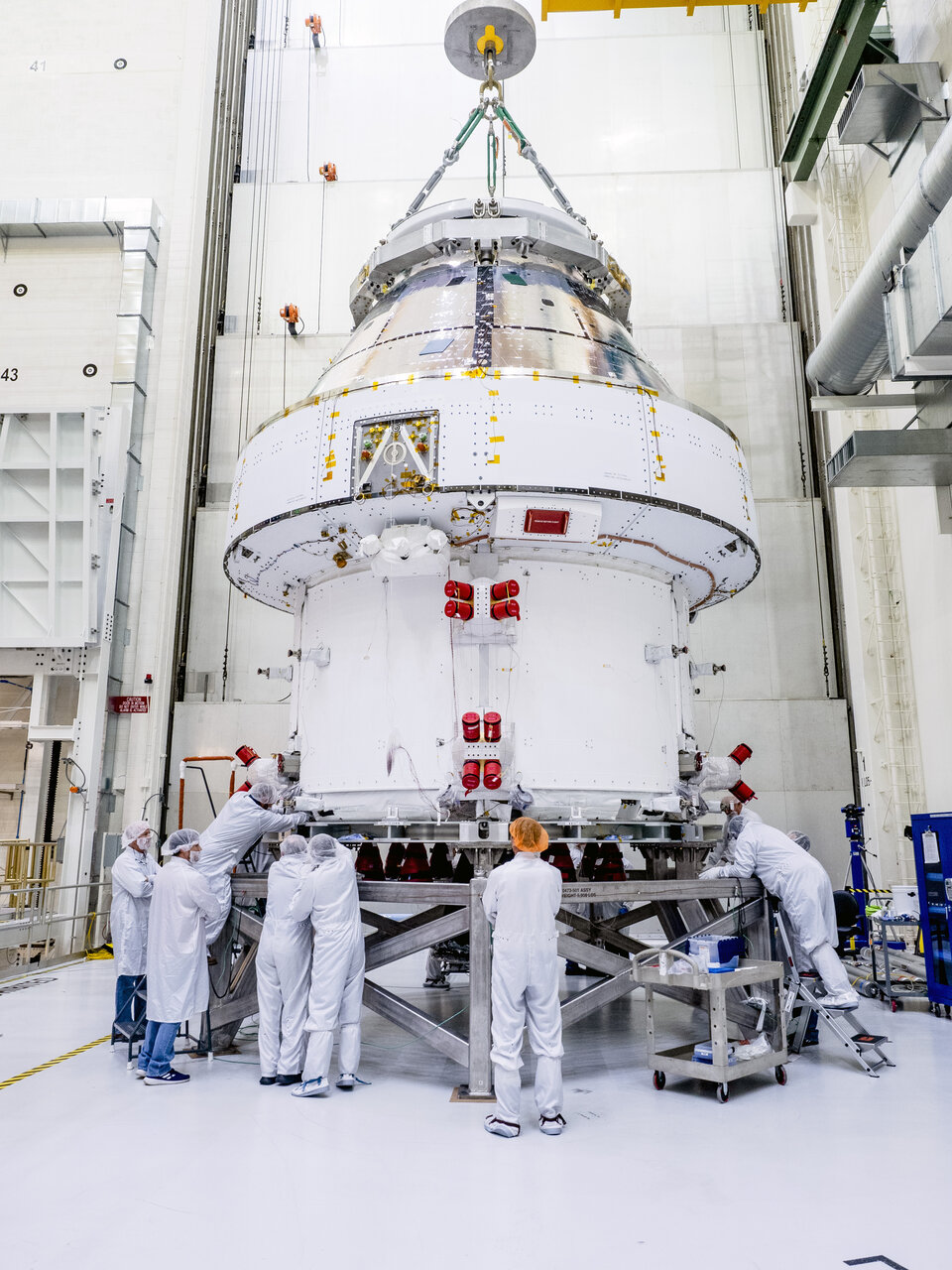
“Our know-how and expertise will enable us to continue to facilitate future Moon missions through international partnerships,” says Andreas Hammer, Head of Space Exploration at Airbus. “By working together with our customers ESA and NASA as well as our industrial partner Lockheed Martin, we now have a reliable planning basis for the first three lunar missions. This contract is an endorsement of the joint approach combining the best of European and American space technologies.”
Development and construction drew on experience building the Automated Transfer Vehicles that flew to the International Space Station with regular deliveries of test equipment, spare parts, food, air, water and fuel.
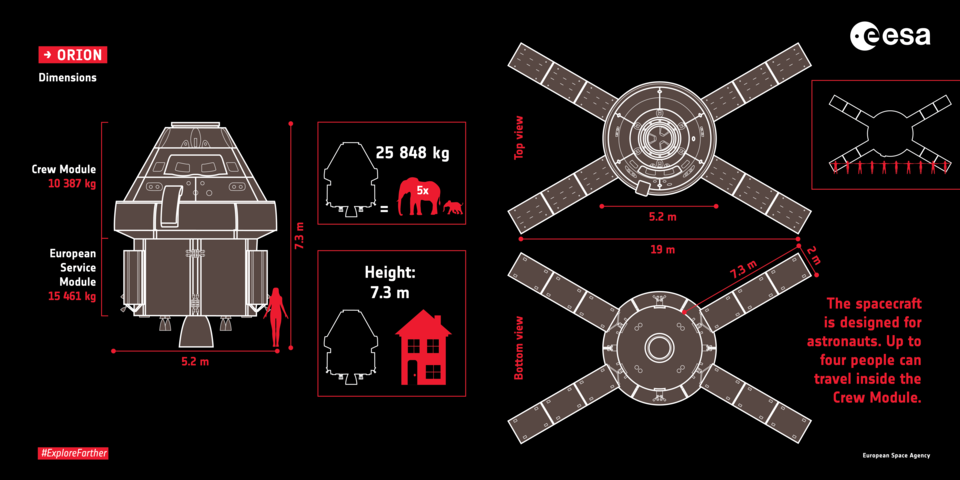
Orion is the size of a small house with the European Service Module taking up the first floor at four meters in diameter and height. It has four solar wings that extend 19 m across to generate enough energy to power two households. It carries 8.6 tonnes of fuel to power Orion’s main engine and 32 smaller thrusters that will keep it on course to the Moon and power the return home to Earth.
The first European Service Module is being handed over to NASA at their Kennedy Space Center for an uncrewed launch next year, and the second is in production at the Airbus integration hall in Bremen, Germany.
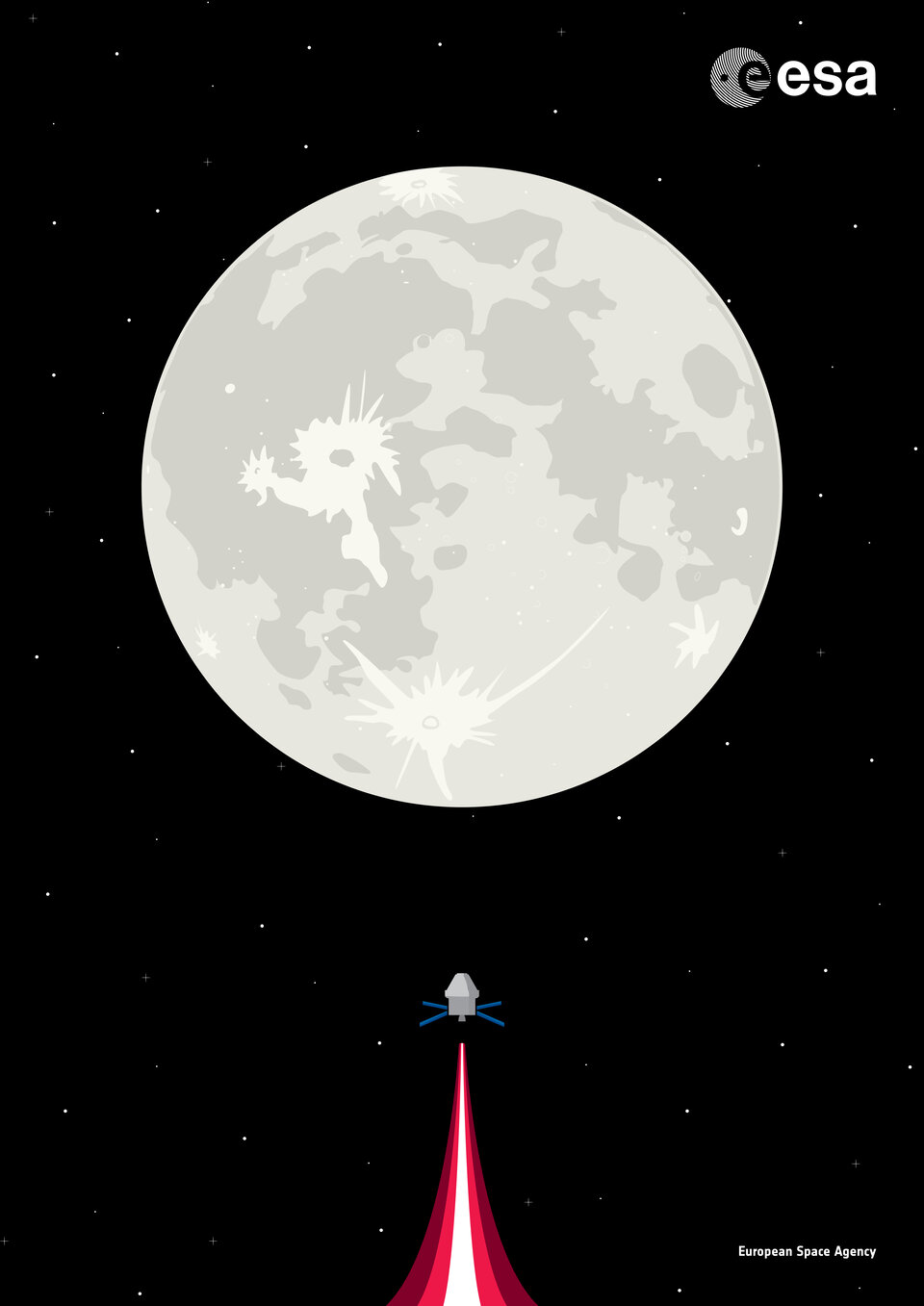
Quelle: ESA
----
Update: 17.06.2020
.
Shuttle-flown solid rocket segments arrive in Florida for Artemis I SLS
|
June 15, 2020
— A solid rocket booster segment that helped launch the Hubble Space Telescope, send the space shuttle Endeavour on its maiden mission and return John Glenn to orbit has arrived back at NASA's Florida spaceport to lift off once again — this time as part of the first Space Launch System (SLS) rocket. |
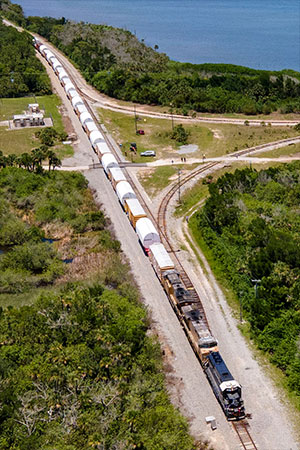 The solid rocket booster segments for NASA's first Space Launch System (SLS) rocket arrived by train to the Kennedy Space Center in Florida on Friday, June 12, 2020. (Northrop Grumman)
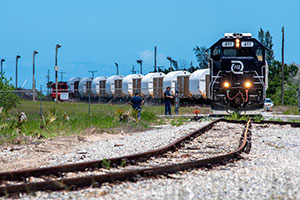 Marking the first such delivery in a decade, space shuttle-era solid rocket booster segments arrive at NASA's Kennedy Space Center for the Artemis I mission in 2021. (Northrop Grumman)
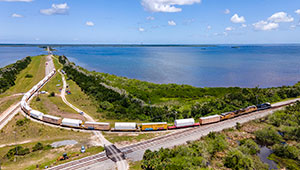 In addition to the fueled segments for Artemis I, two inert common booster segments for Northrop Grumman's OmegA rocket also arrived in Florida by train, riding on red cars. (Northrop Grumman)
|
|
The solid rocket booster segments that will launch NASA's first Space Launch System (SLS) rocket on the Artemis I mission previously flew on a total of 40 space shuttle missions, dating back 30 years. (Northrop Grumman/collectSPACE)
|
|
The segments for NASA's Artemis I solid rocket boosters are moved onto Kennedy Space Center property on Monday, June 15, 2020. The Vehicle Assembly Building (VAB), where the segments will be stacked for launch, can be seen on the horizon. (Northrop Grumman)
|
|
The segments for NASA's Artemis I solid rocket boosters are moved onto Kennedy Space Center property on June 15, 2020. (Northrop Grumman)
|
|
The segments for NASA's Artemis I solid rocket boosters are transported by rail near the Vehicle Assembly Building (VAB). (NASA/Kevin O'Connell)
|
Quelle: CS
----
Update: 18.06.2020
.
The rocket booster segments that will help power NASA’s first Artemis flight test mission around the Moon arrived at the agency’s Kennedy Space Center in Florida on Monday for launch preparations.
All 10 segments for the inaugural flight of NASA’s first Space Launch System (SLS) rocket and Orion spacecraft were shipped by train from Promontory, Utah. The 10-day, cross-country journey is an important milestone toward the first launch for NASA’s Artemis program.
“The arrival of the booster segments at Kennedy is just the beginning of the SLS rocket’s journey to the pad and onward to send the Orion spacecraft to the Moon,“ said NASA Administrator Jim Bridenstine. “Artemis I will pave the way toward landing the first woman and the next man on the surface of the Moon in 2024 and expanding human exploration to Mars.”
Each rocket booster has individual motor segments, located between the forward assemblies and aft skirts, making up the largest single component of the entire booster. The two SLS rocket boosters, four RS-25 engines, and core stage, produce a combined total of more than 8.8 million pounds of thrust power during launch.
“It’s an exciting time at NASA’s Kennedy Space Center as we welcome Artemis flight hardware and continue working toward the Artemis I launch,” said Kennedy Space Center Director Bob Cabana.
Each booster segment, weighing 180 tons, is filled with propellant and outfitted with key flight instrumentation. Due to their weight, Northrop Grumman, which is the booster lead contractor, transported the segments in specially outfitted railcars to make the 2,800-mile trip across eight states to Florida’s Space Coast.
“The fully assembled boosters for NASA’s Space Launch System rocket are the largest, most powerful solid propellant boosters ever built for flight,” said Bruce Tiller, manager of the SLS Boosters Office at NASA’s Marshall Space Flight Center in Huntsville, Alabama. “These enormous rocket motors help provide the necessary launch power for the SLS deep space rocket.”
Now that the booster segments are at Kennedy, NASA’s Exploration Ground Systems team will prepare them for assembly and integration activities that start with offloading the segments. Teams will attach the aft segments to the aft skirts and offload and store the remaining segments from the railcars in preparation for stacking.
“It is good to see booster segments rolling into the Kennedy Space Center,” said Mike Bolger, program manager of Exploration Ground Systems. “The team can’t wait to get started working on the boosters that will send the SLS rocket and Orion spacecraft on the first Artemis mission to the Moon.”
The solid rocket boosters are the first elements of the SLS rocket to be installed on the mobile launcher in preparation for launch. The aft booster assemblies will be lifted on to the mobile launcher, followed by the remaining booster segments, and then topped with the forward assembly.
Teams at Kennedy have been preparing for the arrival of the booster segments by assembling and testing the aft skirts and forward assemblies of the boosters, and practicing stacking procedures with booster pathfinders, or hardware replicas, earlier this year. NASA and Northrop Grumman completed casting in 2019 of all 10 of the motor segments for both the first and second Artemis lunar missions, and are now working on the boosters for the Artemis III mission, which will land the first woman and next man on the Moon in 2024.
With the arrival of the boosters, the only remaining pieces of hardware for the Artemis I flight test to be delivered to Kennedy are the launch vehicle stage adapter, which connects the rocket to the Orion spacecraft and will arrive this summer, and the SLS core stage, which will be transported to Kennedy by barge after the Green Run hot fire test later this year at NASA’s Stennis Space Center near Bay St. Louis, Mississippi.
Through the Artemis program, NASA will return astronauts to the Moon’s surface in four years. SLS, along with NASA’s Orion spacecraft, the Human Landing System and the Gateway in orbit around the Moon, will serve as NASA’s backbone for deep space exploration. SLS is the only rocket that can send Orion, astronauts, and supplies to the Moon on a single mission. We’ll explore more of the lunar surface than ever before, and collaborate with our commercial and international partners to establish sustainable exploration by the end of the decade. Then, we will use what we learn on and around the Moon to take the next giant leap – sending astronauts to Mars.
Quelle: NASA

